Enhance your diving experience at WOSD
In
your
time
In
your
way
At
your
instructor
For
your
pleasure
You've caught the diving virus, but now what?
The specialty courses of WOSD have been specially developed to connect seamlessly with the programs of the WOSD primary courses.
The primary purpose of a WOSD specialty course is to acquire the knowledge and skills necessary to allow the diver to safely and responsibly specialize in an additional skill.
WOSD Specialty courses are divided into 'Recreational specialties', ' Medical specialties' and 'Technical specialties'.
RECREATIONAL SPECIALTIES
 This group includes the recreational specialty courses that use the complete diving equipment, where only compressed air is used as the breathing gas and where, during the dive, a direct ascent to the surface is always possible.
This group includes the recreational specialty courses that use the complete diving equipment, where only compressed air is used as the breathing gas and where, during the dive, a direct ascent to the surface is always possible.
-
Advanced Diver
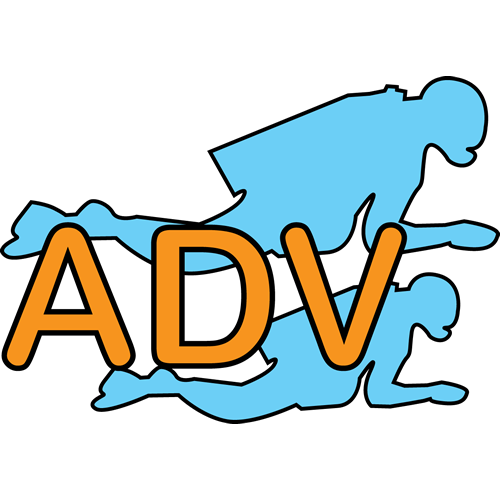 You have now obtained your 'Autonomous Diver' certificate and even made several (certified) dives. You are also thinking about going on vacation somewhere to go diving, or you want to get specialty certifications, but you are not sure what you will like. That is why this WOSD 'Advanced diver' course exists.
You have now obtained your 'Autonomous Diver' certificate and even made several (certified) dives. You are also thinking about going on vacation somewhere to go diving, or you want to get specialty certifications, but you are not sure what you will like. That is why this WOSD 'Advanced diver' course exists.During the WOSD 'Advanced Diver' course you will receive additional theoretical information and you will also make several dives that let you experience what else you can experience in the underwater world. You will improve your buoyancy control, you will learn to work with a signal balloon, you will gain additional navigation knowledge and you will dive during darkness.
Some of these parts are pieces of WOSD specialty courses so that, after this course, you know even better what your interests are and therefore you can enjoy the underwater world even more. After successfully completing this course, you will receive the WOSD certificate 'Advanced diver'.
The WOSD "Advanced Diver" course consists of the following sections:
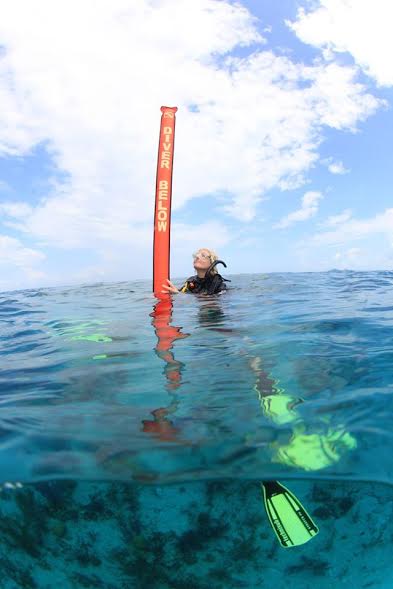 Theoretical knowledge:
Theoretical knowledge:
In this section, we take a closer look at the topics mentioned above. You will learn a small basic of the different subjects so that you can safely conduct the practical skills.Practical skills:
In this section you will learn, together with your dive instructor, in an open water environment how to perform what you have learned. You will use the various techniques discussed in the theory part.Pre-requisites:
- Certified as a WOSD "Autonomous Diver" (Diver level 2) or equivalent;
- Minimum 14 years of age;
- Competent swimmer (swimming diploma not necessary);
- Approved medical statement;
- Signed Certificate of Understanding.
-
Dry Suit Diver
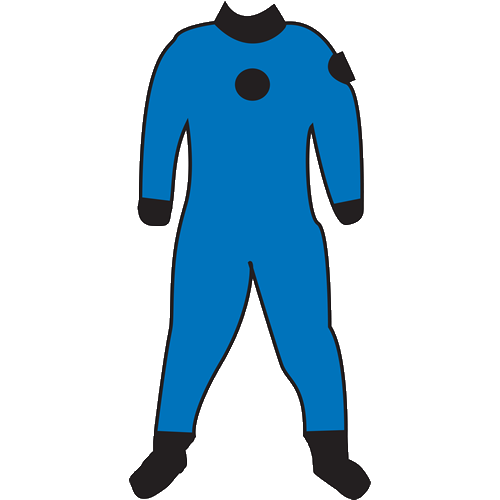 About 70% of our Earth is covered with water suitable for diving. Unfortunately for the diver, the water temperature is not always 30 degrees Celsius everywhere. Due to the colder water we cool down quickly and the dive time is often shortened.
About 70% of our Earth is covered with water suitable for diving. Unfortunately for the diver, the water temperature is not always 30 degrees Celsius everywhere. Due to the colder water we cool down quickly and the dive time is often shortened.By diving with a dry suit we cool down many times slower. This allows us to extend the dive time. With a dry suit we can also make dives in water where you normally cannot dive with a (semi) wet suit because this is not responsible.
During the WOSD specialty course 'Dry suit diver' you will learn which types of dry suits there are and what the advantages and disadvantages of each type of dry suit are. You will also learn which additional parts can be attached to a dry suit. During the practice dives you learn how to prevent and possibly solve the emergency situations that can arise with a dry suit. After successfully completing this specialty course you will receive the WOSD certificate 'Dry suit diver'.
The WOSD "Dry Suit Diver" course consists of the following sections:
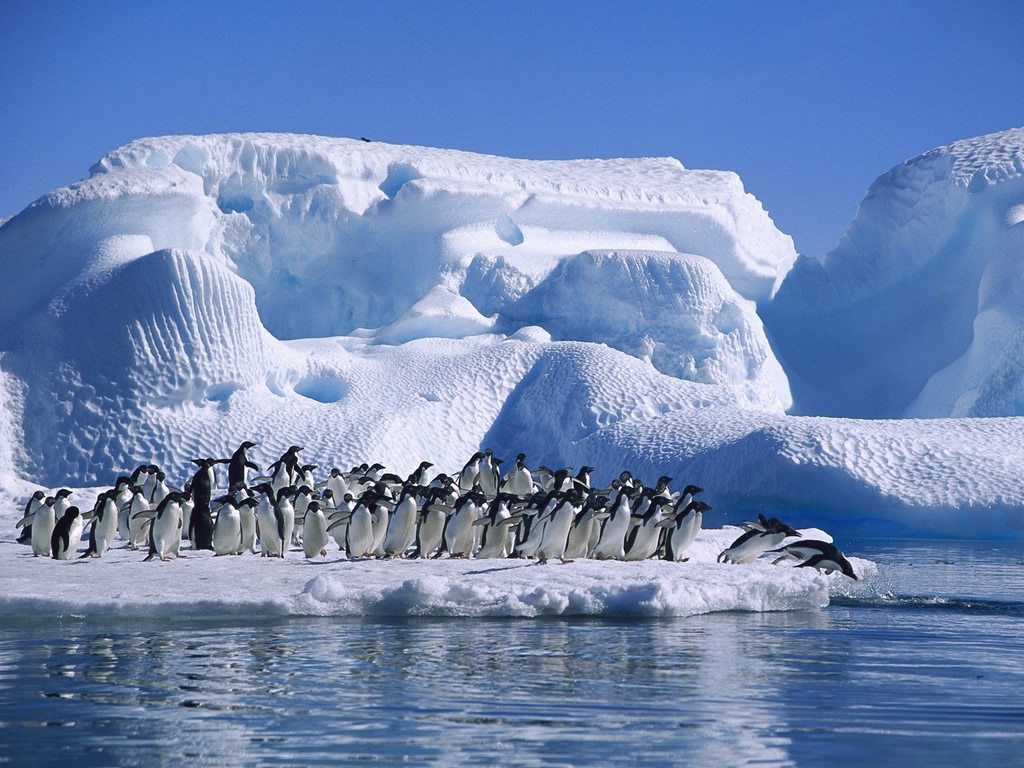 Theoretical Knowledge:
Theoretical Knowledge:
In this part you will learn which dry suit is most suitable for you, how to dive with it and how to maintain itPractical Skills:
In this part you, together with your dive instructor, will learn how to perform what you have learned in an open water location. You will use the various techniques that have been discussed in the theory part.Pre-requisites:
- Certified as a WOSD 'Supervised Diver' (Diver level 1) or equivalent;
- Minimum 12 years of age;
- Competent swimmer (swimming diploma not necessary);
- Approved medical statement;
- Signed Certificate of Understanding.
-
Equipment specialist
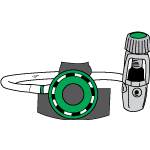 Every diver knows that proper maintenance of his diving equipment can mean the difference between a pleasant, safe dive and a life-threatening situation. This maintenance is not only performed by an authorized service technician, but also by the diver himself.
Every diver knows that proper maintenance of his diving equipment can mean the difference between a pleasant, safe dive and a life-threatening situation. This maintenance is not only performed by an authorized service technician, but also by the diver himself.The WOSD 'Equipment Specialist' specialty course is designed to provide a more in-depth knowledge of the functioning of the mechanical and partially electronic parts of diving equipment. The purpose of this is to understand the importance and operation of the diving equipment so that you know whether and why the equipment (still) functions safely. In addition to this, minor faults in the equipment can be resolved by yourself.
This course is not a mechanic training. You need a certificate from the manufacturer (importer) for this. This course is also not about which equipment is better or worse. All modern equipment meets established standards and are therefore all safe in their class. After successfully completing this specialty you will receive the WOSD certificate 'Equipment Specialist'.
The WOSD "Equipment Specialist" course consists of the following sections:
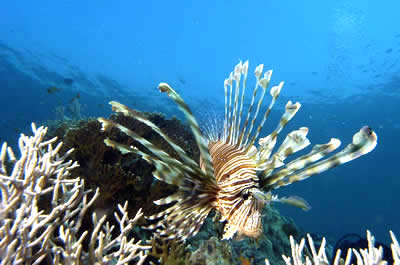 Theoretical Knowledge:
Theoretical Knowledge:
In this part you will learn how diving equipment functions. Not only do we take a closer look at the functioning of balanced and unbalanced regulators, but we also explain which forces determine whether a regulator gives air or not. In addition, we discuss various types of inflator systems and explain the functioning of diving instruments. It is also explained when you can do something about your diving equipment yourself and when you should leave this to an authorized service technician.Practical Skills:
In this part you will, together with your diving instructor, carry out some small repairs that you can do yourself if you get a malfunction with your diving equipment. You will use the knowledge that has been discussed in the theory part.Pre-requisites:
- Certified as a WOSD 'Ocean Ranger' or equivalent;
- Minimum 12 years of age;
- Signed Certificate of Understanding.
-
Master Scuba Diver
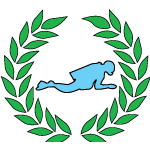 WOSD Master Scuba Diver is the highest non-professional diving certification a diver can earn at WOSD.
WOSD Master Scuba Diver is the highest non-professional diving certification a diver can earn at WOSD.The WOSD Master Scuba Diver certification is a sign that the diver has developed extensive training and experience in the major (diving) specialties. It is not for nothing that these specialties are also a mandatory pre-requisite to achieve the first professional WOSD level (Dive Leader).
WOSD Master Scuba Diver is not a specific specialty course, but is a process in which knowledge and experience are brought to a high level.
To apply for the WOSD Master Scuba Diver certification, the diver must meet the following requirements:
- Certified as a WOSD "Autonomous Diver" (Diver level 2) or equivalent;
- Certified as a WOSD 'Underwater Navigator' specialty diver or equivalent;
- Certified as a WOSD 'Night Diver' specialty diver or equivalent;
- Certified as a WOSD 'Multi-level Deep Diver' specialty diver or equivalent;
- Certified as a WOSD 'Equipment Specialist' specialty diver or equivalent;
(At least 3 of the above certifications must be WOSD certifications) - At least 40 logged dives (excluding training dives);
- Minimum 16 years of age;
- Competent swimmer (swimming diploma not necessary);
- Approved medical examination (not older than 1 year);
- Signed Certificate of Understanding.
-
Multi-level Deep Diver
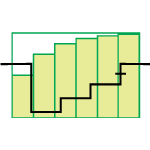 Diving to a depth of more than 20 meters is only reserved for divers certified for a 'deep diving' specialty (up to 40 metres) or divers who have specialised in technical diving involving special mixtures of 3 or more different gases. be used as breathing gas (up to and including 100+ metres). Dives to a greater diving depth are characterized by a relatively short bottom time.
Diving to a depth of more than 20 meters is only reserved for divers certified for a 'deep diving' specialty (up to 40 metres) or divers who have specialised in technical diving involving special mixtures of 3 or more different gases. be used as breathing gas (up to and including 100+ metres). Dives to a greater diving depth are characterized by a relatively short bottom time.Another way to safely extend the dive time during a dive between 20 and 40 meters is to make this dive as a “multi-level deep dive”. This uses a technique that ensures that the tissues already lose nitrogen during the dive so that you do not exceed certain limits, which means that the dive time can also be longer in a safe way.
During the WOSD specialty course 'Multi-level deep diver' you will learn how to make a deep dive between 20 and 40 meters in a simple and safe way. In addition, you will learn how to safely extend your dive time from greater depths without the need for a decompression stop. After successfully completing this specialty course you will receive the WOSD certificate 'Multi-level deep diver'.
The WOSD "Multi-level Deep Diver" course consists of the following sections:
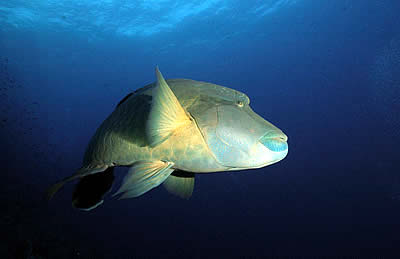 Theoretical knowledge:
Theoretical knowledge:
In this part you will learn what happens to the human body when we dive deeper. We take a closer look at saturating and desaturating the body tissues. In addition, you will learn how to safely extend a dive to a greater depth without being required to make a decompression stop.Practical skills:
In this part you, together with the dive instructor, will learn how to perform what you have learned in an open water location. You will use the various techniques necessary to make a safe deep dive and to make a safe multi-level dive.Pre-requisites:
- Certified as a WOSD 'Autonomous Diver' (Diver level 2) or equivalent;
- Minimum 15 years of age;
- Competent swimmer (swimming diploma not necessary);
- Approved medical statement;
- Signed Certificate of Understanding.
-
Night Diver
 The setting of the sun doesn’t mean that you can’t dive anymore. However, many divers think that similarly to land, there is nothing to experience underwater. The contrary is true. In many places the underwater life is much more active that during the day. Many fish, such as eels, morays and lobsters hunt under cover of the darkness. Additionally, you will see much more because your eyes are focused on that part that is illuminated by your dive lamp. In this way, even a dive site where you think you have seen it all, becomes an interesting site again.
The setting of the sun doesn’t mean that you can’t dive anymore. However, many divers think that similarly to land, there is nothing to experience underwater. The contrary is true. In many places the underwater life is much more active that during the day. Many fish, such as eels, morays and lobsters hunt under cover of the darkness. Additionally, you will see much more because your eyes are focused on that part that is illuminated by your dive lamp. In this way, even a dive site where you think you have seen it all, becomes an interesting site again.During the WOSD specialty course “Night diver” you will learn both how to simply and enjoyably extend your dive fun long after sunset and by using the right dive lamp and also how you can dive in water with limited visibility. After having successfully completed this specialty course, you will receive the WOSD certificate “Night diver”.
The WOSD "Night Diver" course consists of the following sections:
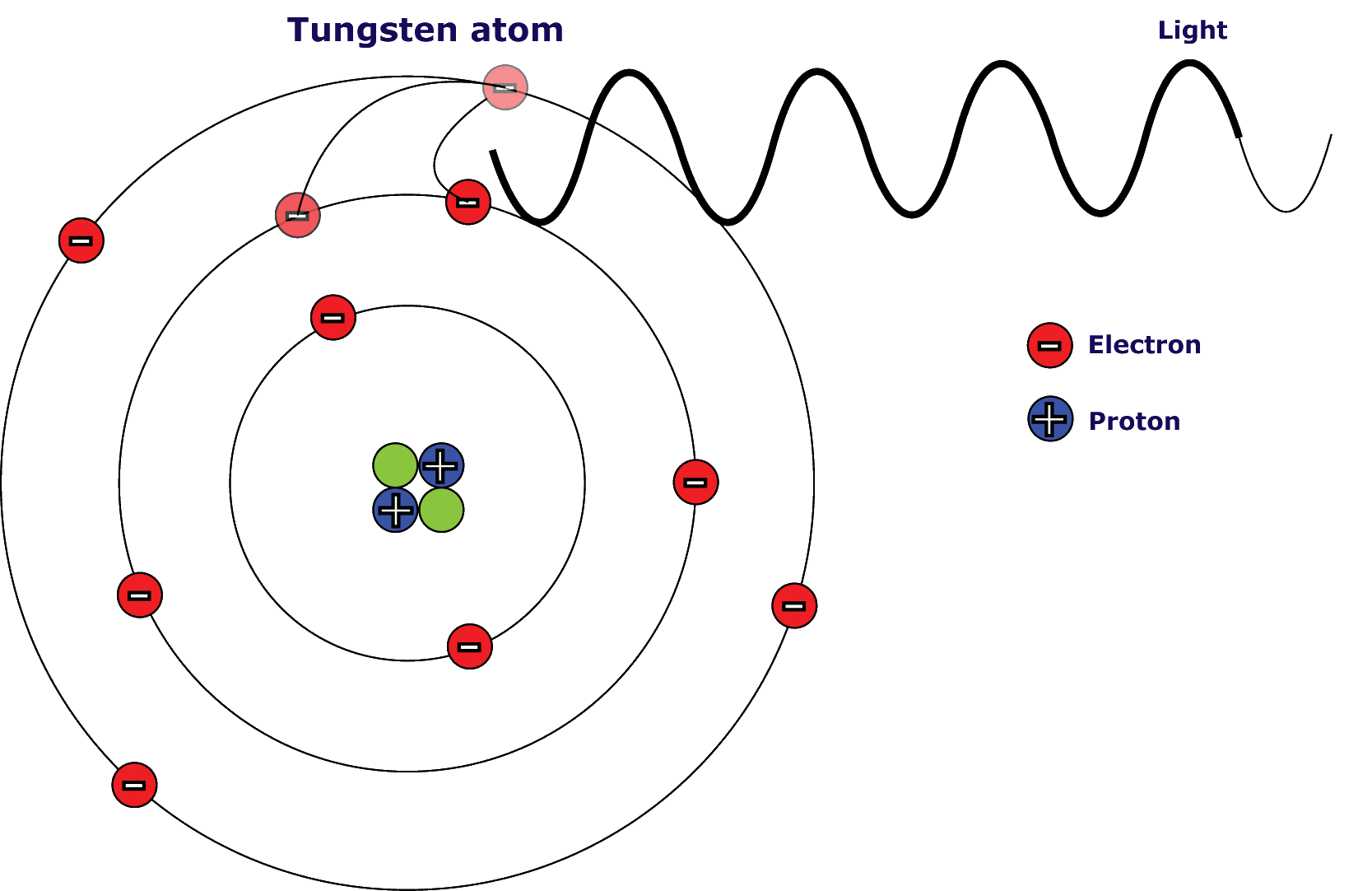 Theoretical knowledge:
Theoretical knowledge:
In this part you will learn what changes in the underwater life at night. You will also learn which dive lamp is most suitable and how to properly service this lamp.Practical skills:
In this section you will learn, together with your dive instructor, in an open water environment how to perform what you have learned. You will use the various techniques discussed in the theory part.Pre-requisites:
- Certified as a WOSD "Supervised Diver" (Diver level 1) or equivalent;
- Minimum 12 years of age;
- Competent swimmer (swimming diploma not necessary);
- Approved medical statement;
- Signed Certificate of Understanding.
-
Underwater Navigator
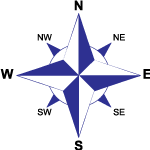 Every diver basically just wants to be underwater and to enjoy the underwater flora and fauna or other dive sites such as a wreck. Unfortunately, we have a limited air supply and dive time, and we often must end a dive earlier that we would ideally like to. The last thing we want to do is waste time underwater searching for the dive site, so that there is even less time to enjoy the dive. By utilizing navigation techniques, we are more aware of our location underwater and therefore able to determine which direction to swim in. As a result, we can quickly find the site where we want to dive and therefore enjoy the dive to the full.
Every diver basically just wants to be underwater and to enjoy the underwater flora and fauna or other dive sites such as a wreck. Unfortunately, we have a limited air supply and dive time, and we often must end a dive earlier that we would ideally like to. The last thing we want to do is waste time underwater searching for the dive site, so that there is even less time to enjoy the dive. By utilizing navigation techniques, we are more aware of our location underwater and therefore able to determine which direction to swim in. As a result, we can quickly find the site where we want to dive and therefore enjoy the dive to the full.In the WOSD specialty course 'Underwater Navigator', you can learn how to navigate, easily and safely, using both natural objects and compass techniques. After successfully completing this course, you will receive the WOSD certificate ‘Underwater Navigator’.
The WOSD "Underwater Navigator" course consists of the following sections:
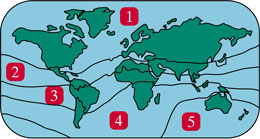 Theoretical knowledge:
Theoretical knowledge:
In this part of the course, you learn how to use natural objects combined with a dive compass, to navigate effectively underwater. You will also learn how to use triangulation to locate a specific object. Additional analogue and digital tools are also covered.Practical skills:
In this section you will learn, together with your dive instructor, in an open water environment how to perform what you have learned. You will use the various techniques discussed in the theory part.Pre-requisites:
- Certified as a WOSD "Supervised Diver" (Diver level 1) or equivalent;
- Minimum 12 years of age;
- Competent swimmer (swimming diploma not necessary);
- Approved medical statement;
- Signed Certificate of Understanding.
The Earth consists of more than 70% water and there is more life under water than life on land.
As a result, there is also plenty to discover in the underwater world.
For example, do you know that there are more than 9000 species of different living creatures living in the Mediterranean Sea?
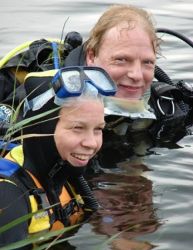
MEDICAL SPECIALTIES
 This group includes the medical specialty courses that use the complete diving equipment and cover dive safety-based topics.
This group includes the medical specialty courses that use the complete diving equipment and cover dive safety-based topics.
-
Rescue Diver
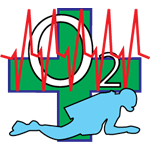 Prevention is better than cure. How many times have you heard this. It means as much as: "First think about how you can do it well before you do it so that you don't have to clean up the pieces later."
Prevention is better than cure. How many times have you heard this. It means as much as: "First think about how you can do it well before you do it so that you don't have to clean up the pieces later."
Yet you notice that divers are often very laconic with preparation and safety before, during and after the dive. Especially divers who have been diving for a while, the thought is often: "Oh, I already know it all, so what can happen to me now?" and it is precisely this mentality that causes diving accidents to happen.During the WOSD rescue diver course you will learn to gain insight into the dangers that can arise during diving and how you can most efficiently prevent and solve them. You will not only gain a lot of medical knowledge, but you will also gain great practical skills in observing, preventing and rescuing people in and around the water. Of course, working with rescue materials and communicating with the emergency services is also not forgotten. After successfully completing this course, you will receive the WOSD certificate ‘Rescue Diver’.
The WOSD "Rescue Diver" course consists of the following sections:
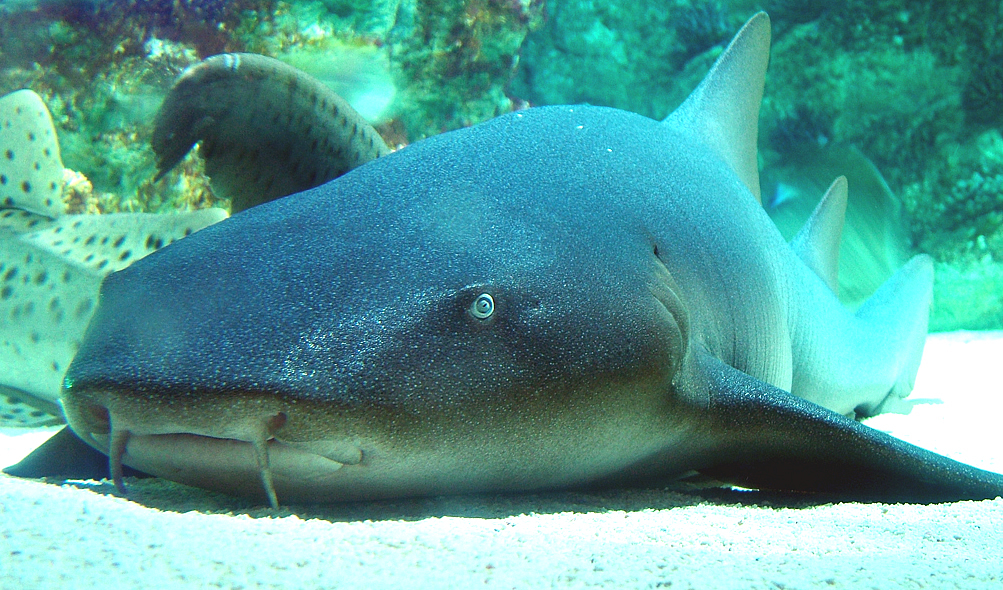 Theoretical knowledge:
Theoretical knowledge:
In this part you will learn what actions are necessary to be a good rescue diver. You will also go deeper into (diving) medical illnesses and problems and it will be explained, among other things, how the various emergency resources function and how and when you can use and deploy them.Practical skills:
In this part, you and your dive instructor will go through various training scenarios, each time learning a different aspect of being a rescue diver. At the end, various scenarios will be created in which all these aspects are combined, giving you the feeling that you are experiencing an actual rescue situation.Pre-requisites:
- Certified as a WOSD 'Autonomous Diver' (Diver level 2) or equivalent;
- Certified as a DAN 'Basic Life Support Provider' or equivalent;
- Certified as a DAN 'Oxygen Provider' or equivalent;
- Minimum 16 years of age;
- Competent swimmer (swimming diploma not necessary);
- At least 40 logged dives (excluding training dives);
- Approved medical examination (not older than 1 year);
- Signed Certificate of Understanding.
TECHNICAL SPECIALTIES
 This group includes the technical specialty courses that use the complete diving equipment, where a breathing gas other than compressed air is used or where, during the dive, a direct ascent to the surface is not possible.
This group includes the technical specialty courses that use the complete diving equipment, where a breathing gas other than compressed air is used or where, during the dive, a direct ascent to the surface is not possible.
-
Enriched Air Diver,
level 1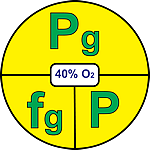
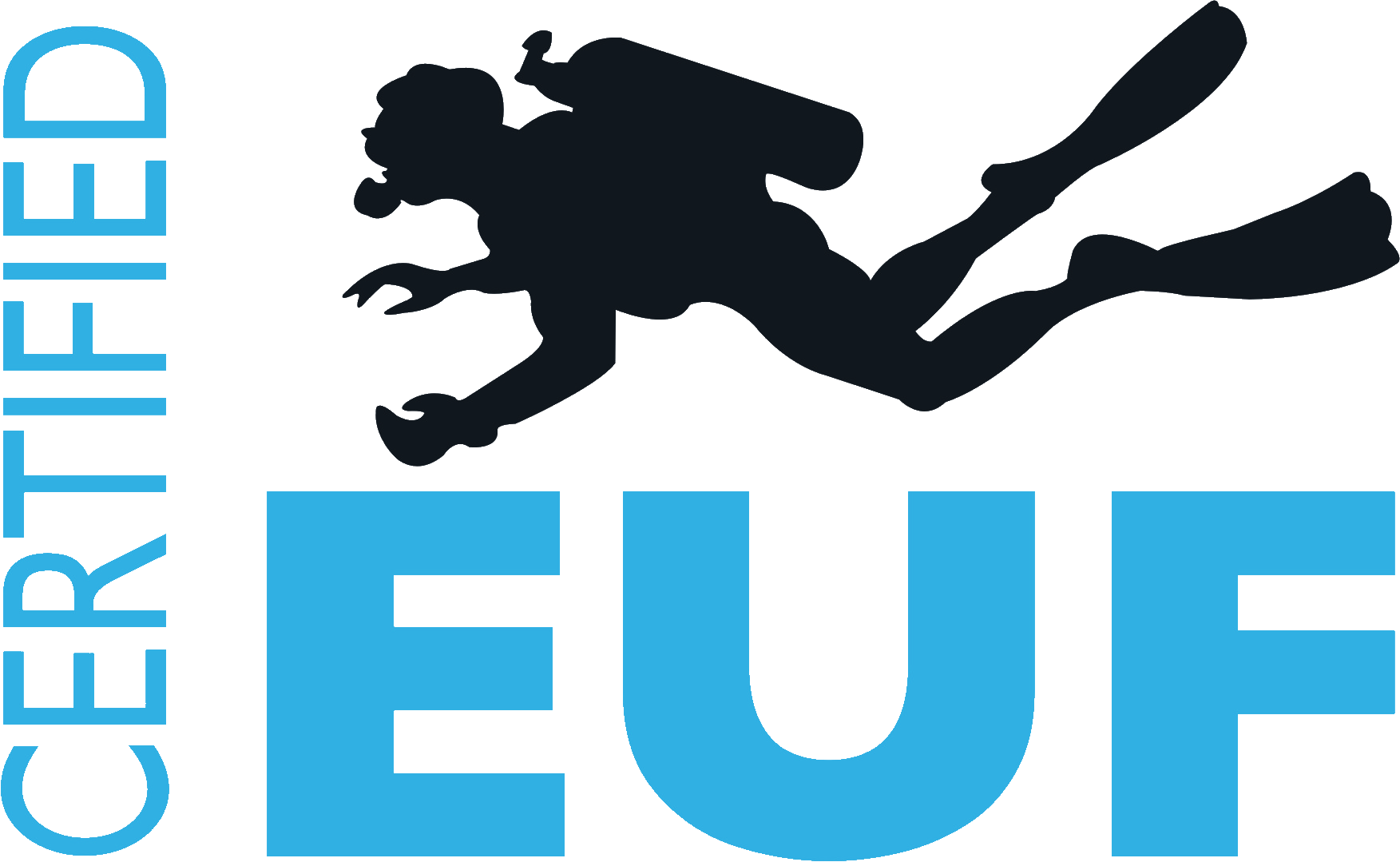 Unfortunately the maximum duration of any dive is limited. How often does it happen that you are exploring a great wreck or admiring the wonderful life forms on a coral reef when your dive computer indicates that it is time to end the dive to prevent exceeding the non-decompression dive limit?
Unfortunately the maximum duration of any dive is limited. How often does it happen that you are exploring a great wreck or admiring the wonderful life forms on a coral reef when your dive computer indicates that it is time to end the dive to prevent exceeding the non-decompression dive limit?Diving with an enriched air breathing gas mixture enables the maximum dive duration to be safely extended without the dive becoming a decompression dive. Enriched air has been in use since the 1950’s. It was used mainly by professional divers, but using this breathing gas also offers major benefits for recreational divers.
During the WOSD specialty course, ‘Enriched Air Diver Level 1’, you learn how to dive safely using enriched air with a maximum of 40% oxygen. After successfully completing this specialty course you will receive the WOSD certificate 'Enriched Air Diver, level 1'
The WOSD "Enriched Air Diver, level 1" course consists of the following sections:
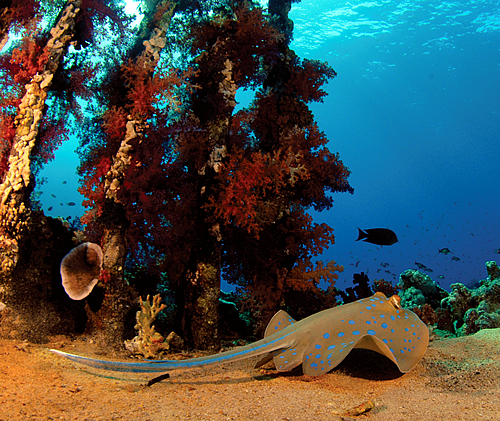 Theoretical knowledge:
Theoretical knowledge:
In this section you learn exactly what enriched air is and how you can calculate the maximum dive depth and corresponding dive time limits for each gas in an enriched air mixture. The safety aspects of diving with enriched air will be covered in detail and you will learn how to obtain and test enriched air.Practical skills:
In this section you will learn, together with your dive instructor, in an open water environment how to perform what you have learned. The dives will be conducted using various enriched air gas mixtures.Pre-requisites:
- Certified as a WOSD "Autonomous Diver" (Diver level 2) or equivalent;
- Minimum 14 years of age;
- Competent swimmer (swimming diploma not necessary);
- Approved medical statement;
- Signed Certificate of Understanding.
Authorized to:
- Conduct non-decompression dives using enriched air equipment with oxygen percentages of up to 40%;
- May dive together with another "Enriched Air Diver, level 1 or higher, as long as one of the divers has reached the age of majority that applies in the country where the dive is conducted.
Recognition:
This WOSD course is ISO 11107 certified. This means that this WOSD course meets the highest international standards for quality and safety. -
Ice Diver, level 1
 Ice diving. Only few places in the world is this possible and then often only for a short period of time. Diving under ice is often seen as something magical. Under the ice it is often very light, there are no more shadows and when the sun shines on the ice you will be surprised by thousands of prisms that shine through the ice.
Ice diving. Only few places in the world is this possible and then often only for a short period of time. Diving under ice is often seen as something magical. Under the ice it is often very light, there are no more shadows and when the sun shines on the ice you will be surprised by thousands of prisms that shine through the ice.Ice diving falls under the group of 'penetration diving'. Others in this group include wreck diving and cave diving. Penetration dives do not allow direct ascents to the surface, but there is usually only one or two exits through which the diver can safely return to the surface. This requires additional preparations and safety rules. You don't just do ice diving 'just like that', but it requires thorough preparation and discipline.
During the WOSD specialty course 'Ice diver, level 1' you will learn how to safely make an ice dive through a hole. After successfully completing this specialty course you will receive the WOSD certificate 'Ice diver, level 1'.
The WOSD "Ice Diver, level 1" course consists of the following sections:
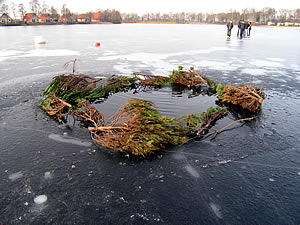 Theoretical knowledge:
Theoretical knowledge:
In this part you will learn, among other things, how to make and cover a hole, how to enter and leave the water and how to dive under the ice. In addition, all safety regulations related to an ice dive are of course discussed in detail.Practical skills:
In this section you will learn, together with your dive instructor, in an open water environment how to perform what you have learned. You will use the various techniques discussed in the theory part necessary to make a safe ice dive.Pre-requisites:
- Certified as a WOSD "Autonomous Diver" (Diver level 2) or equivalent;
- Certified as a DAN 'Basic Life Support Provider' or equivalent;
- Certified as a DAN 'Oxygen Provider' or equivalent;
- Certified as a WOSD 'Rescue Diver' or equivalent;
- Minimum 16 years of age;
- Competent swimmer (swimming diploma not necessary);
- Approved medical statement;
- Signed Certificate of Understanding.
BUSINESS INFORMATION
WOSD COURSES

